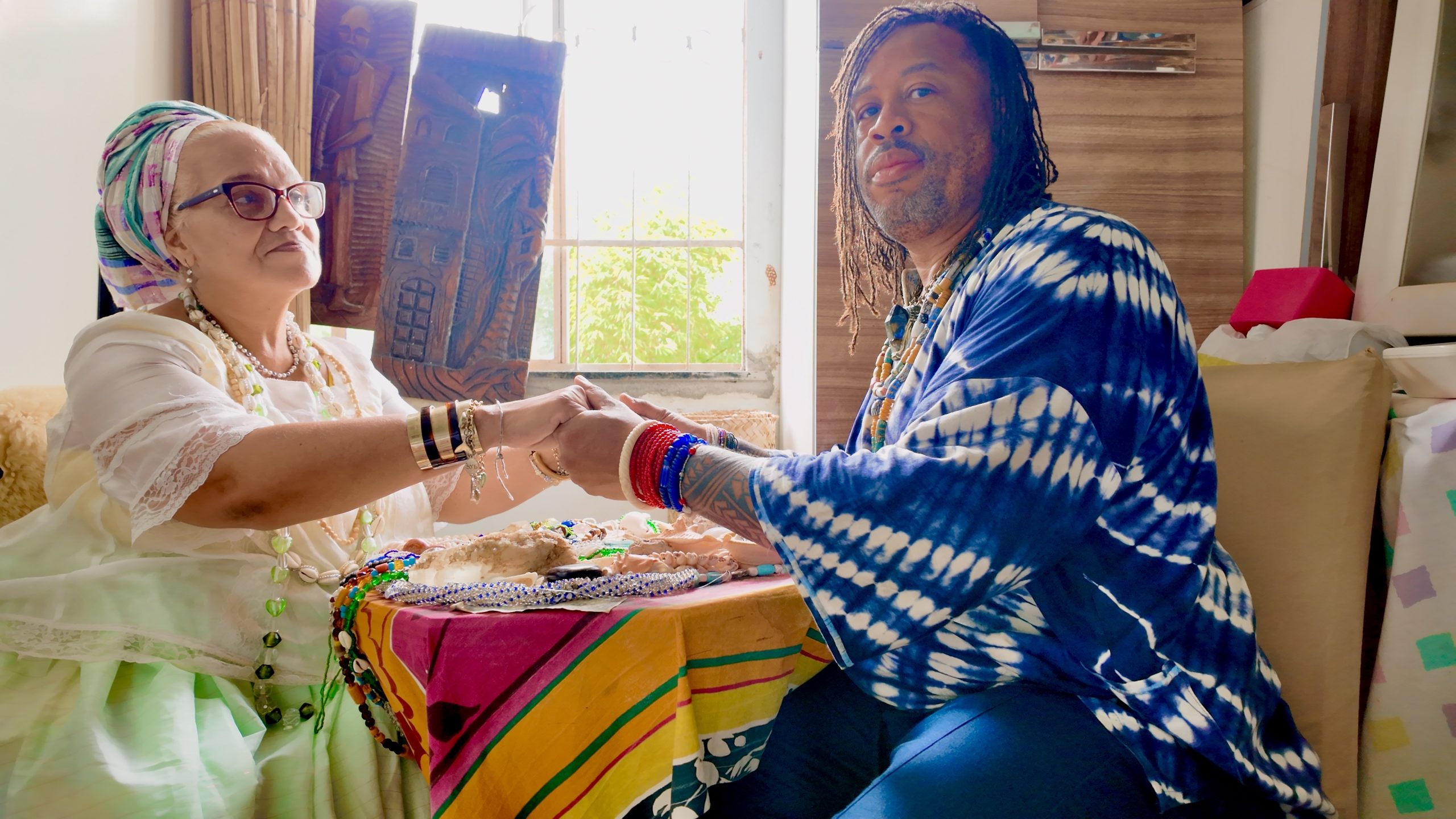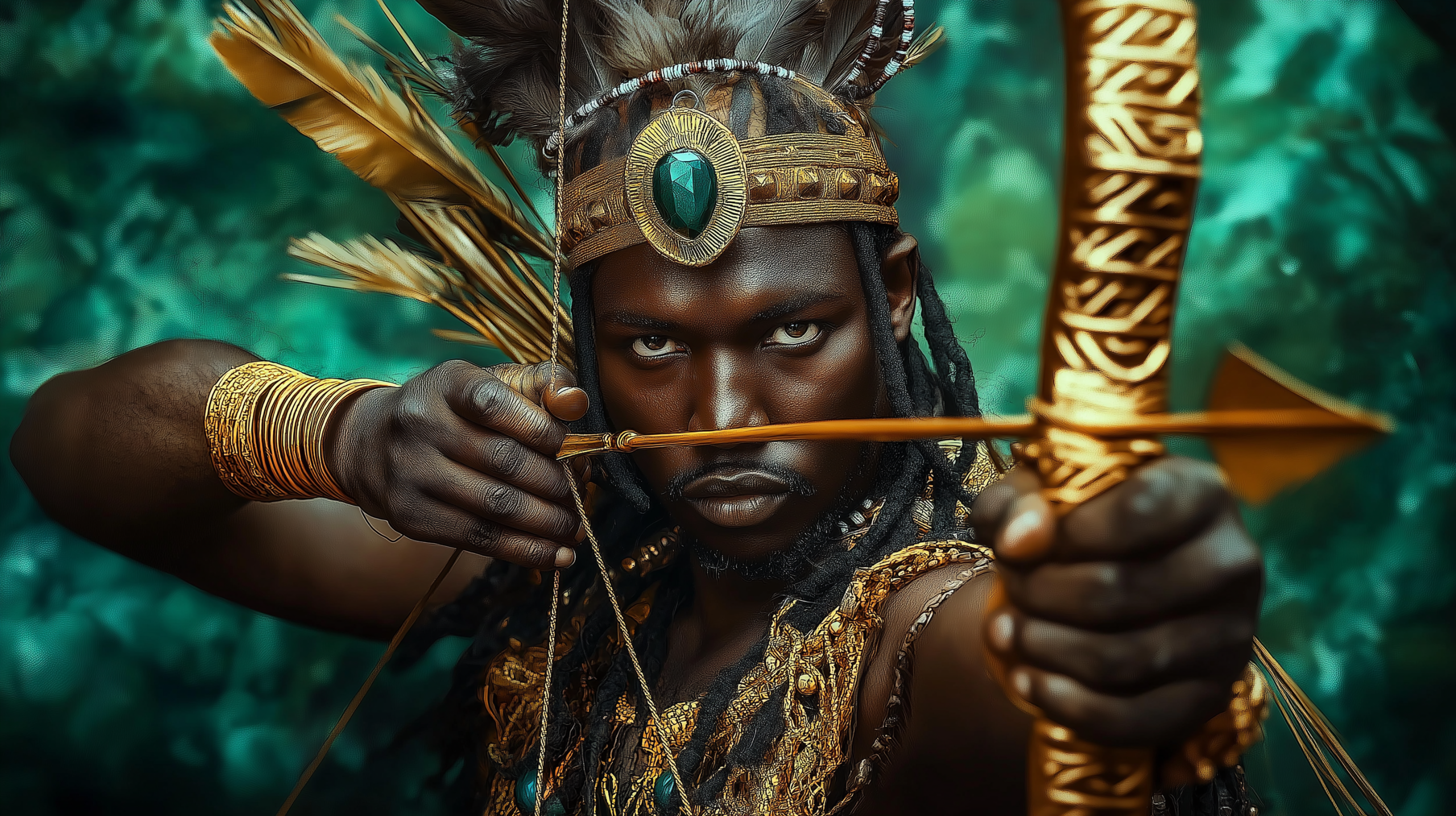Son of Oxóssi – Candomblé Orisa Reading
My trip to Brazil was work! Of course, there was enjoyment, but my main focus was to work and learn. My journey centered on indigenous medicine exploration and African spirituality. In November 2019, I was introduced to Ifá—a moment that happened by chance but sparked a deep curiosity. That curiosity led me to travel across West Africa to learn more.
What started as curiosity became a pathway—one that opened new and transformative experiences in my life. But Brazil was the true catalyst for this journey, thanks to Baba Augustino de Santos, a Candomblé Xangô priest, who gave me my first spiritual bath…
Fast forward, and I met Mãe Sany, a Iemanjá Candomblé priestess. I went to her for a reading to learn about my Ori.
Through a deliberately slow and intentional reading, she revealed truths through the cowrie shells—truths I had never shared with anyone. Some things I had even buried deep, hoping never to remember, suddenly resurfaced.
I was in awe. Tears flowed.
As we continued, my heart raced with anticipation. Who is my Ori?
She began to reveal it. I was shocked—very surprised. But as she explained, everything made sense—who I am, who I have always been, and who I am becoming. My father, my head Orisha, is Oxóssi.

In my heart, I thought it might be Iemanjá or Xangô—but no. However, they still appeared as my protectors. My intuition had not misled me.
Days later, I returned to Mãe Sany for an Obè (head cleansing), dressed in white.
During the process, I told myself: “I’m deep in now.” This is a new beginning. At certain moments during the cleansing, my body reacted physically—I’m still processing it.
Mãe Sany carefully removed my crystals, placed them in a bowl filled with herbs and water, and cleansed them with song—just as she did for my body and spirit. Then, she returned them to me, along with my Oxóssi ileke.
This journey into traditional African spirituality has left me feeling more aligned, connected, and clear on my next steps. I’m walking forward with spirit guiding me.

Oxóssi: The Hunter Orisha of Wisdom, Abundance, and Protection
Oxóssi is one of the most revered Orishas across multiple Afro-diasporic spiritual traditions, including Candomblé (Ketu nation), Lucumí (Santería), and Ifá. He is known as the Orisha of hunting, abundance, wisdom, and the forests, and is often depicted as a solitary hunter armed with a bow and arrow (ofá). Oxóssi represents precision, intelligence, and the pursuit of knowledge, making him an essential spiritual force for those seeking guidance, sustenance, and prosperity.
Oxóssi originates from theYoruba religious s ystem in West Africa, where he is known as Òsóòsì. In Yoruba lands, he was regarded as a skilled and cunning hunter, a provider for his community, and a guardian of nature. His name is often translated as “the one who hunts at night”, symbolizing his stealth, wisdom, and ability to navigate unseen realms.
During the transatlantic slave trade, Yoruba religious traditions were carried to the Americas, where they syncretized with Catholicism and indigenous beliefs, giving rise to Candomblé (Brazil), Lucumí (Cuba), and Ifá divination practices across the diaspora. In these traditions, Oxóssi remains a powerful and protective force, revered for his ability to bring spiritual and material abundance.
Oxóssi in Candomblé Ketu
In Candomblé Ketu, Oxóssi is a central figure and is often referred to as Rei das Matas (King of the Forests). His presence ensures prosperity, wisdom, and protection, particularly for those who work with nature, knowledge, and spiritual practices.
Devotional Practices in Candomblé
Devotees of Oxóssi honor him with:
• Offerings: His favorite foods include axoxô (a dish made from corn, coconut, and honey), fruits, smoked meats, and fresh game.
• Colors & Symbols: His primary color is green, representing nature, but in some traditions, he is also associated with blue. His symbols include the bow and arrow, animal hides, and feathers.
• Dance & Trance Possession: During Candomblé rituals, devotees enter a trance state, allowing Oxóssi’s energy to manifest through them, dancing with grace and agility to represent his role as a swift and skillful hunter.
Oxóssi in Lucumí (Santería)
In Lucumí (Santería), practiced mainly in Cuba, Puerto Rico, and parts of the U.S., Oxóssi is syncretized with Saint Sebastian, due to the saint’s depiction with arrows. He is an Orisha of hunters, providers, and those who seek clarity in life.
Devotional Practices in Lucumí
• Offerings: Similar to Candomblé, devotees offer corn, roasted meats, fruits, and honey.
• Colors & Symbols: In Lucumí, Oxóssi’s primary color is often green, and his eleke (beaded necklace) typically consists of green, blue, and yellow beads.
• Cleansing Rituals: Devotees may receive ritual head-washings (rogación de cabeza) in Oxóssi’s name to bring mental clarity and focus.
• Dance and Music: In Lucumí ceremonies, drummers play the Oxóssi rhythm, and dancers imitate his movements as a hunter in pursuit of his prey.
Oxóssi in Ifá Divination
In Ifá, the Yoruba divination system, Oxóssi is recognized as an Orisha of wisdom, intelligence, and knowledge-seeking. His role is similar to Esu and Orunmila, in that he helps individuals make wise decisions and navigate life’s challenges.
Devotional Practices in Ifá
• Sacrifices: Offerings of fruits, grains, and hunted meats are given to Oxóssi to ask for protection and success.
• Oriki (Praise Chants): Devotees recite sacred verses to invoke his presence.
• Oracles & Divination: In Ifá, Babalawos (priests) use divination tools such as Ifá trays and palm nuts to communicate with Oxóssi, asking for guidance on wealth, survival, and knowledge.
Oxóssi’s Universal Themes Across Traditions
Despite regional differences, Oxóssi’s essence remains consistent across Candomblé, Lucumí, and Ifá:
1. The Hunter and Provider – He ensures his devotees never go without food, knowledge, or spiritual clarity.
2. A Master of Strategy and Precision – Unlike warriors like Ogum, Oxóssi wins battles through intellect and skillful execution.
3. A Guardian of the Forest – He represents nature, the wild, and untamed wisdom.
4. A Bridge Between the Physical and Spiritual – He guides seekers towards knowledge and abundance, whether material or metaphysical.
Oxóssi is a powerful and revered Orisha who symbolizes abundance, wisdom, and the balance between action and contemplation. Whether in Candomblé, Lucumí, or Ifá, he is honored as a hunter, protector, and provider. His energy continues to guide entrepreneurs, students, spiritual seekers, and those in need of clarity and prosperity. Through his myths, rituals, and teachings, Oxóssi remains a vital and enduring force in the Afro-diasporic spiritual landscape.
For those who seek his blessings, Oxóssi offers not just material abundance, but also wisdom, patience, and the ability to move through life with precision and purpose.

